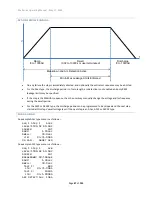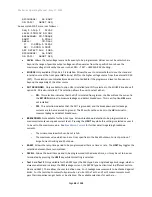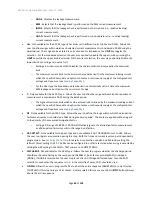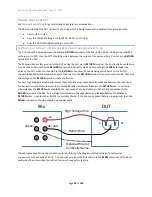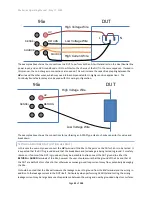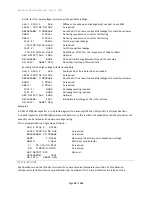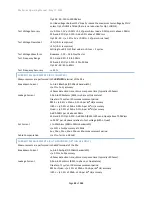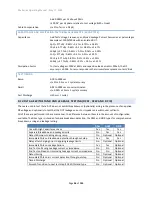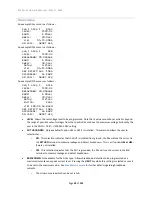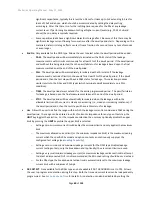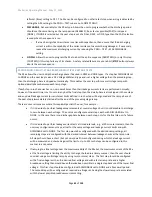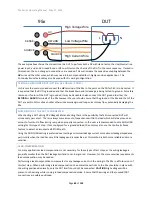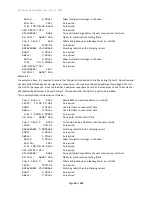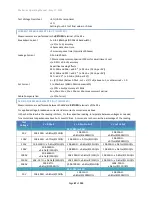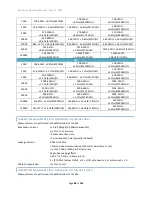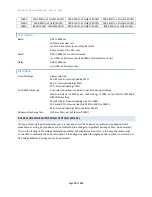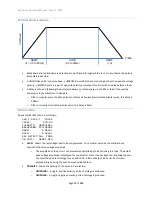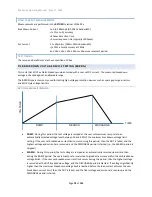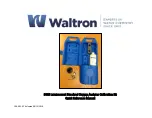
95x Series Operating Manual - May 17, 2022
Page
60
of
155
significant capacitance, typically this is less than 0.5sec for loads up to 1uF extending to 5sec for
loads of 10uF and above, which should be accommodated by setting the delay setting
accordingly. After this there is no further settling time required for the 95x at any leakage
current level. If performing breakdown testing at higher current levels (e.g.,
100’s of uA and
above) then no delay is typically required.
o
Some capacitive loads have a significant dielectric storage affect. Because of this there may be
significant leakage current flowing for some time after the dwell period starts. Depending on the
materials, dielectric storage effects can last from a fraction of a second to many tens of seconds
or even longer.
•
End On
. Only available for the DCIR type. Allows the user to select when the dwell period will be ended
–
o
PASS
. The dwell period will be immediately terminated with a PASS status if the leakage
measurement is within limits continuously for at least 2% of the dwell period. If the dwell period
ends without this being detected, then the pass/fail status for leakage is based upon the final
measurement taken at the end of the dwell period.
o
FAIL
. The dwell period will be immediately terminated with a FAIL status if the leakage
measurement is outside of limits continuously for at least 2% of the dwell period. If the dwell
period ends, then the test step will have a PASS status for leakage. This selection produces
similar results to the DCez and DCW types (which terminate dwell immediately on a FAIL
condition).
o
TIME
. The dwell period always extends for the entire programmed period. The pass/fail status
for leakage is based upon the final measurement taken at the end of the dwell period.
o
STDY
. The dwell period will be automatically terminated when the leakage is within the
allowable limits and the current is steady or decreasing (i.e., steady or increasing resistance). If
the dwell period ends, then the test step will have a FAIL status for leakage.
•
Lim
. Allows the user to define the range within which the leakage current is considered a PASS during the
dwell period. The range can be entered in units of current or impedance for any type of test step, the
UNIT
key toggles the selection. For the impedance selection the user may optionally disable the upper
limit by pressing the
LIMIT
key while the upper limit is selected.
o
Setting a zero minimum current limit disables the minimum limit and only applies the maximum
limit.
o
The maximum allowed current limit (or the minimum impedance limit) is the maximum loading
current which the specific 95x model and option content can continuously supply at the
configured test voltage (see
o
Setting a zero minimum and maximum leakage currents for the DCW type disables leakage
current testing entirely, only the breakdown and (optionally) the arc current limits are used.
o
Setting a very small minimum leakage current (or maximum leakage resistance) limit to attempt
to detect a disconnected DUT is not recommended, the Min Load setting should be used instead.
o
For the DCez type the breakdown detection limit is automatically set to the maximum leakage
current limit with a minimum of 1uApk.
•
ARC DETECT
. Not available for the DCez type and not available if DUT GROUNDED is set to YES. Allows
the user to program arc detection during this step. Both the time and current level can be independently
programmed. See
for details. Arc detection can also be disabled by setting the


